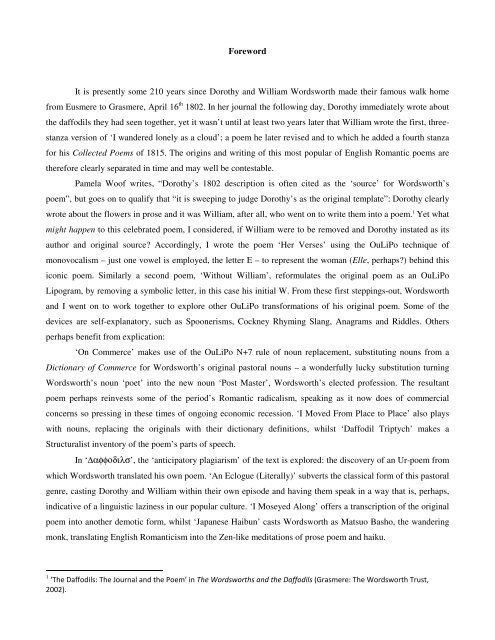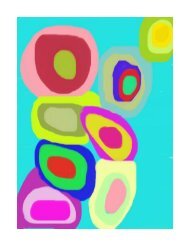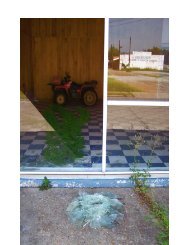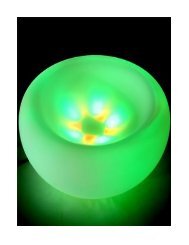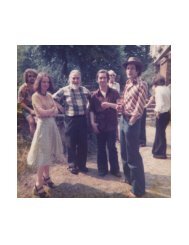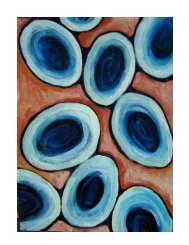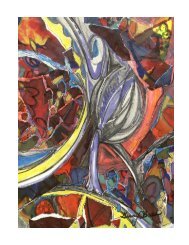Woody Alliances Laundered - The Argotist Online
Woody Alliances Laundered - The Argotist Online
Woody Alliances Laundered - The Argotist Online
You also want an ePaper? Increase the reach of your titles
YUMPU automatically turns print PDFs into web optimized ePapers that Google loves.
Foreword<br />
It is presently some 210 years since Dorothy and William Wordsworth made their famous walk home<br />
from Eusmere to Grasmere, April 16 th 1802. In her journal the following day, Dorothy immediately wrote about<br />
the daffodils they had seen together, yet it wasn’t until at least two years later that William wrote the first, three-<br />
stanza version of ‘I wandered lonely as a cloud’; a poem he later revised and to which he added a fourth stanza<br />
for his Collected Poems of 1815. <strong>The</strong> origins and writing of this most popular of English Romantic poems are<br />
therefore clearly separated in time and may well be contestable.<br />
Pamela Woof writes, “Dorothy’s 1802 description is often cited as the ‘source’ for Wordsworth’s<br />
poem”, but goes on to qualify that “it is sweeping to judge Dorothy’s as the original template”: Dorothy clearly<br />
wrote about the flowers in prose and it was William, after all, who went on to write them into a poem. 1 Yet what<br />
might happen to this celebrated poem, I considered, if William were to be removed and Dorothy instated as its<br />
author and original source? Accordingly, I wrote the poem ‘Her Verses’ using the OuLiPo technique of<br />
monovocalism – just one vowel is employed, the letter E – to represent the woman (Elle, perhaps?) behind this<br />
iconic poem. Similarly a second poem, ‘Without William’, reformulates the original poem as an OuLiPo<br />
Lipogram, by removing a symbolic letter, in this case his initial W. From these first steppings-out, Wordsworth<br />
and I went on to work together to explore other OuLiPo transformations of his original poem. Some of the<br />
devices are self-explanatory, such as Spoonerisms, Cockney Rhyming Slang, Anagrams and Riddles. Others<br />
perhaps benefit from explication:<br />
‘On Commerce’ makes use of the OuLiPo N+7 rule of noun replacement, substituting nouns from a<br />
Dictionary of Commerce for Wordsworth’s original pastoral nouns – a wonderfully lucky substitution turning<br />
Wordsworth’s noun ‘poet’ into the new noun ‘Post Master’, Wordsworth’s elected profession. <strong>The</strong> resultant<br />
poem perhaps reinvests some of the period’s Romantic radicalism, speaking as it now does of commercial<br />
concerns so pressing in these times of ongoing economic recession. ‘I Moved From Place to Place’ also plays<br />
with nouns, replacing the originals with their dictionary definitions, whilst ‘Daffodil Triptych’ makes a<br />
Structuralist inventory of the poem’s parts of speech.<br />
In ‘∆αφφοδιλσ’, the ‘anticipatory plagiarism’ of the text is explored: the discovery of an Ur-poem from<br />
which Wordsworth translated his own poem. ‘An Eclogue (Literally)’ subverts the classical form of this pastoral<br />
genre, casting Dorothy and William within their own episode and having them speak in a way that is, perhaps,<br />
indicative of a linguistic laziness in our popular culture. ‘I Moseyed Along’ offers a transcription of the original<br />
poem into another demotic form, whilst ‘Japanese Haibun’ casts Wordsworth as Matsuo Basho, the wandering<br />
monk, translating English Romanticism into the Zen-like meditations of prose poem and haiku.<br />
1 ‘<strong>The</strong> Daffodils: <strong>The</strong> Journal and the Poem’ in <strong>The</strong> Wordsworths and the Daffodils (Grasmere: <strong>The</strong> Wordsworth Trust,<br />
2002).


